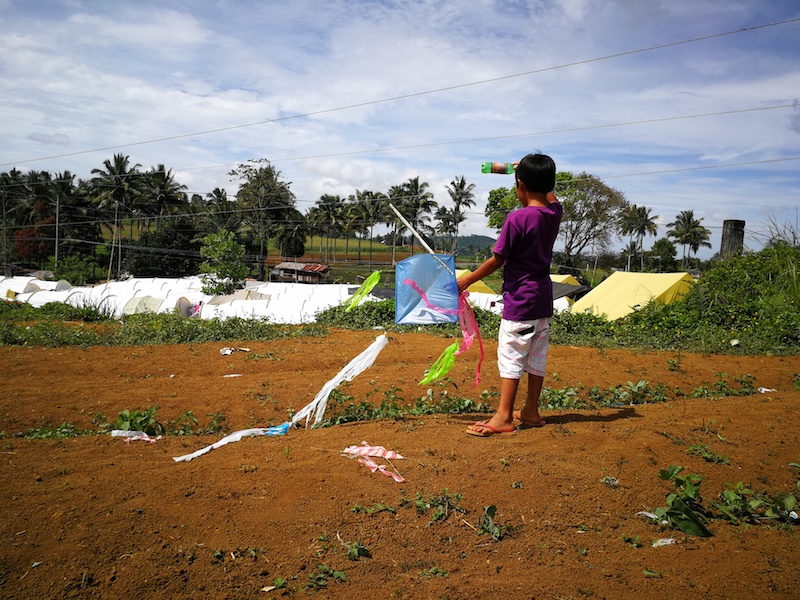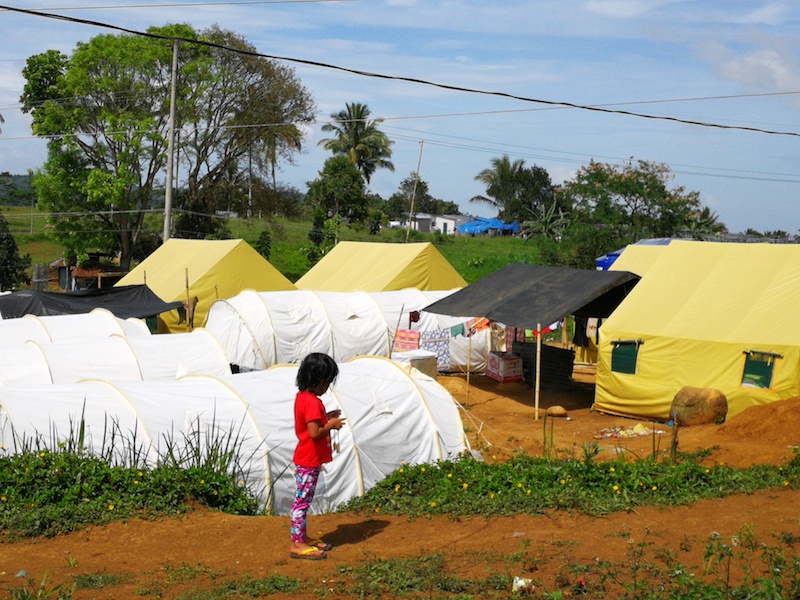
LANAO DEL SUR, Philippines – When Marawi crumbled, its people rose.
Beyond the reach of the war between the Philippine military and the Maute Group, the resettlement site of Barangay Bito Buadi Itowa, Lanao del Sur, has offered temporary homes to the internally displaced persons (IDPs) of the 5-month conflict.
Around 122 tents may have provided shelter to families, but for the IDPs, the comfort is often fleeting.
"The day's heat can sometimes be inevitable," said a mother whose 18-member extended family has shared a single roof. "Whenever our children get sick, we ask aid from the barangay health center, and they would give us medicine for free."
To address their needs, Camp Manager Joanna Abdel Fattah said that aside from the 50 huts that the Tarlac Heritage Foundation provided in October, the group will be setting up a hundred more tents in the coming months.
"We have been told that there are more IDPs who will come to stay here," said Abdel-Fattah, who was assigned to the role by the Department of Social Welfare and Development Region 12 (DSWD-12). "Those who come from the capitol (in Marawi) will be transferred here."
Sowing reponsibilities
To sustain their needs, the community has cultivated the land.
Nestled on fertile earth that turns red at noon, the resettlement site does not only contain rows of tents, but also has fields where edible plants and crops are grown and tended by the residents.
Barangay Captain Solaiman Ali has encouraged the practice so that the community will not run out of resources. Some of the tended vegetables and crops include eggplants, squash, kangkong (watercress), and pechay (Chinese cabbage).

Every day, most of the youth members in the community gather in one shed where a pipe, provided by the Philippine Red Cross, perpetually brings forth water. Besides using it for bathing and consumption, they sprinkle water over the fields.
"Once the fields are ripe, the people gather for the harvest," Abdel-Fattah said. "They can do whatever they want with the produce. They can either sell them or they can take them for their household supply."
According to the camp manager, they usually sell the the crops in the nearby municipality of Saguiaran, located in the northern part of Lanao del Sur.
Empowered refugees
One matron selling turon (deep-fried caramelized bananas wrapped in spring-roll sheets) under one tent claimed this livelihood has helped her support her 8 children, and send them to school. Her eldest is currently in high school.
"I will do what I can to give my children the proper education they deserve," she said. Her tent stands both as a shelter and a store.
Xavier University - Ateneo de Cagayan and its participating departments and affiliated organizations initially contributed to the cultivation. In November to December, the community's Farmer's Cluster, under the leadership of Araiz Buyog, set up booths within the university's campus to sell the community's produce.

In front of the university's museum where the Meranaw people's culture is often exhibited, basins of ginger, mung beans, string beans, bananas, string onions, cabbages, and cassava are sold. All of these are grown in the community's fields, tended by people who share the same culture and religious belief.
"We thank the university and the rest of our donors who have continued to help and support us," Buyog said.
Preserving the way of life
On one of the fields where the seedlings have yet to sprout, a boy not more than 12 years old flies his kite.
The boy said that this was his hobby. "I play with my kite every day," he said.
Unimpeded by their current circumstance of living as an IDP, he retained this hobby after his family relocated to the site. Boys in the community like him have resorted to sports and games for recreation to veer from trauma.
Groups like the Magis Football Club saw the importance for IDPs to retain a semblance of their usual day-to-day activities as a way of coping.
The Magis Football Club, an athletic organization from Cagayan de Oro City that is mostly composed of former Xavier University varsity athletes, has donated 3 balls to the community for its children to play with, besides training them to play the sport. One field has been reserved for games.

Although the community in Barangay Bito Buadi Itowa may gradually return to their homeland with Marawi's current efforts for rehabilitation, their pursuit for survival and their zeal to retain their way of life have marked their resilience. (READ: TIMELINE: The 'liberation' of Marawi)
Like crops planted on Mindanao's fertile earth and kites flown high by innocent children, the community agrees that they could only grow and reach greater heights if they choose to live for peace. – Rappler.com
Angelo Lorenzo is one of Rappler’s Lead Movers in Cagayan de Oro. Besides writing features, he works in the city’s local government unit.